Fix: Spacebar Not Working without Holding the Fn Key
Imagine a keyboard without a spacebar. There is nothing much you will do without it; in fact nothing at all. It is estimated the spacebar is pressed 5 times every 10 seconds when typing. This makes it the most pressed key. Whenever a user is asked to press any key in order to continue a process, they instinctively press the spacebar or the enter key, unless they are those kind of people that slap their keyboard and let fate decide. The spacebar is also used as a gaming key to handle the most common actions.
This is why I have been receiving hilarious messages like, “Kevin.My.Spacebar.Is.Not.Working” or “My_Spacebar_is_not_working” and even “Myspacebarisnotworking” among other variations that indicate the users are really suffering with this problem. While for some users, the spacebar does not work completely, for others the spacebar will only work when the Fn key is held down. Others state that this symptoms are spread to the 1 2 3 & 4 keys. The users that we received this error from were mostly Toshiba, and Lenovo laptop users but Dell, Acer and Hp users also made appearances. In this article we will explain why this problem occurs and give remedies to it.
Why spacebar will not work
The first thing you should do is try another keyboard. This will tell you if it is a software problem or a hardware problem. Hardware problems could be caused by mechanical or electrical damage to the spacebar key, or because of the use of outdated or bad drivers. Software issues can be caused by malware or bugs in input devices utilities or driver conflict.
This problem is mostly (but not exclusively) caused by a conflict between your mouse and keyboard drivers. In Toshiba, Acer and Lenovo laptops, the Synaptics pointing device drivers version 19.0.9.5 and software utility and the Lenovo mouse drivers have been known to cause this problem. A bug within the Synaptics application and drivers forces you to hold down the Fn key (a key that activates secondary uses on other keys; marked in different colors or closed in a square) in order to use the spacebar. Below are the solutions to this annoying problem. If the first method does not work for you, move to the next.
Method 1: Uninstall and reinstall keyboard drivers
Uninstalling the bad or corrupt keyboard drivers will reinstall the correct drivers for your keyboard.
- Press Windows Key + R to open Run
- Type devmgmt.msc and hit enter to open device manager<img class=”aligncenter size-full wp-image-46209″ src=”https://appuals.com/wp-content/uploads/2017/10/Devmngt-1.png” alt=”” width=”399″ height=”206″ />
- Expand the ‘Keyboards’ section
- Right-click on your keyboard drivers and select ‘Uninstall device’
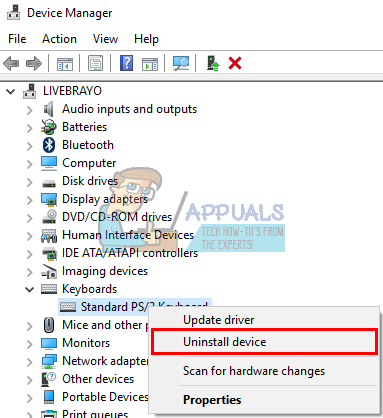
- On the warning message that appears, click on ‘Yes’ or ‘Uninstall’ to remove these drivers
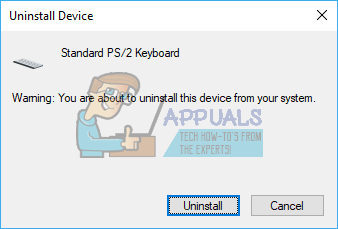
- Check in the section marked ‘Others’ which contains drivers that were installed wrongly (you won’t have this section if all your drivers were correctly installed). Uninstall all the drivers in this section.

- If you have a USB keyboard, unplug it then plug it back in. Or restart your computer. Windows will reinstall the drivers automatically. Check if the spacebar key now functions.
Method 2: Rollback Synaptics pointing device/mouse drivers and prevent automatic updates (on Windows 10)
Windows 10 automatically updates drivers to a new version whenever it is available. The March 2017 Synaptics drivers and utility software updates bear a bug that leads to this problem can be removed by rolling back to the previous drivers. To prevent these drivers from being automatically reinstalled and causing this problem, we must stop Windows 10 from updating them.
- Press Windows Key + R to open Run
- Type devmgmt.msc and hit enter to open device manager
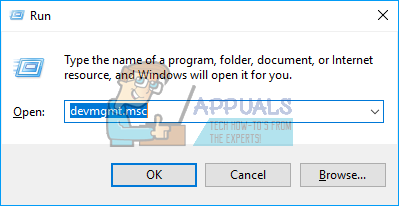
- Expand the ‘Mice and other pointing devices’ section
- Right-click on your mouse or touchpad drivers and select ‘Properties’
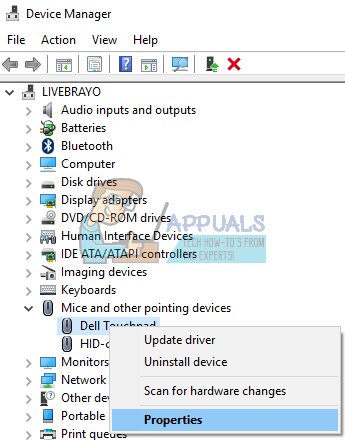
- Go to the ‘Driver’ tab and click on ‘Roll back driver’
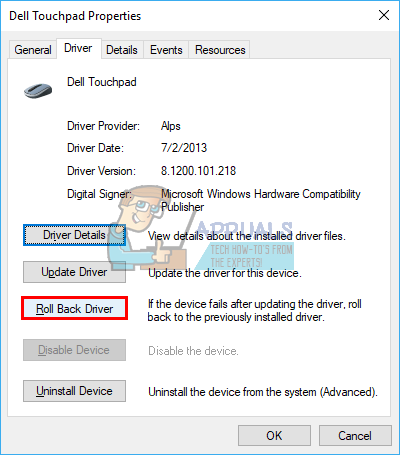
- In the Window that asks for confirmation, click on Yes (you might have to select a reason in Windows 10) to roll back your drivers.
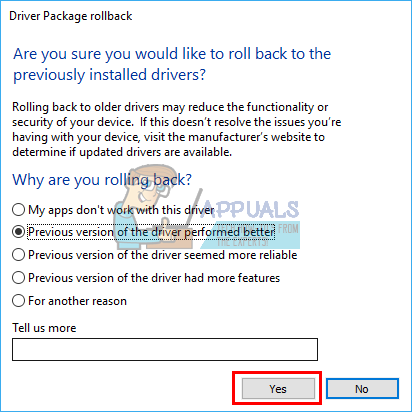
- To disable automatic updates on drivers, Press Windows Key + R to open Run
- Type in ‘Control Panel’ and hit enter to open the control panel

- Click on ‘System and Security’

- Click on System

- Click Advanced system settings from the left sidebar.
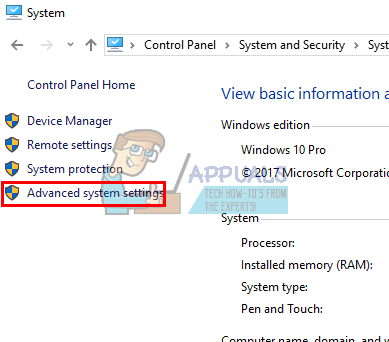
- Click on the hardware tab and click on the Device Installation Settings button.
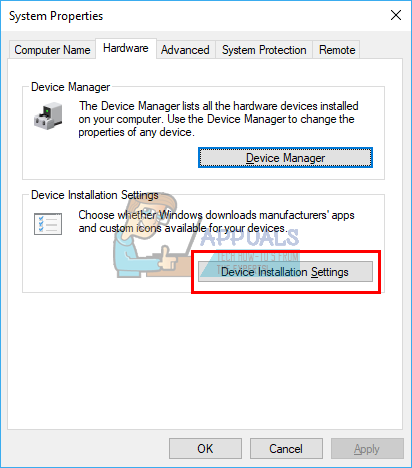
- In the that pops up, select ‘No (your device might not work as expected)’ and then click on ‘Save Changes’
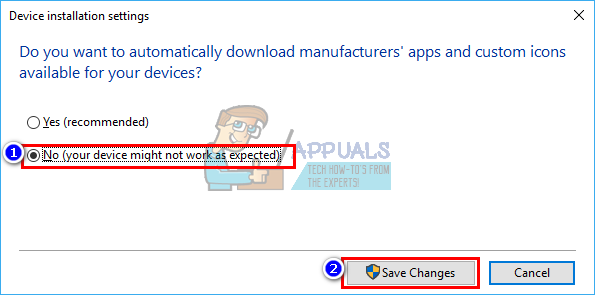
- You might need to restart your PC for effect to take place
If you do not have the option to roll back your drivers, you can download an earlier version (earlier than March 2017 version 19.0.9.5 for Synaptics), uninstall your drivers using method 3 below (without restarting) and then install the old drivers and finally prevent automatic updating.
Method 3: Uninstall and reinstall your mouse or touchpad drivers
This method will fix any corrupt or bad drivers. Windows will automatically install the correct drivers from its repository. If you notice that the drivers are automatically updating and the issue reoccurs, use method 2 above to solve this issue.
- Press Windows Key + R to open Run
- Type devmgmt.msc and hit enter to open device manager

- Expand the ‘Mice and other pointing devices’ section
- Right-click on your mouse or touchpad drivers and select ‘Uninstall device’
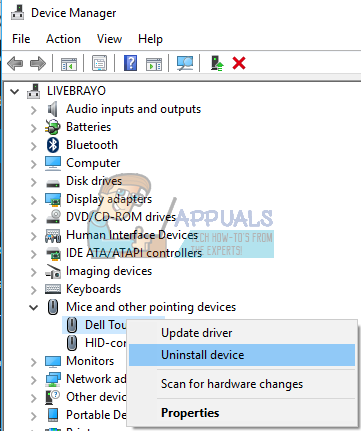
- On the warning message that appears, click on ‘Yes’ or ‘Uninstall’ to remove these drivers
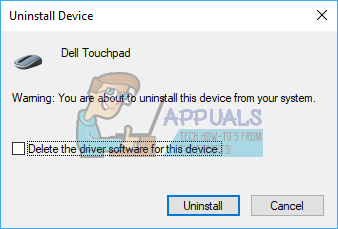
- Check in the section marked ‘Others’ which contains drivers that were installed wrongly (you won’t have this section if all your drivers were correctly installed). Uninstall all the drivers in this section.
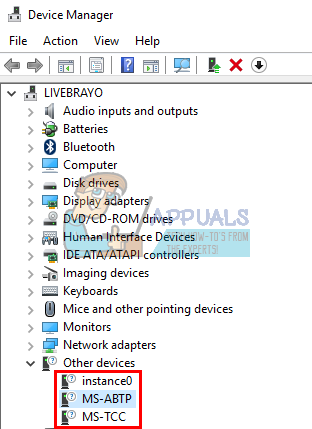
If you have a USB mouse, unplug it then plug it back in. Or restart your computer. Windows will reinstall the drivers automatically. Check if the Windows key now functions.
Method 4: Update Synaptics or Lenovo etc. pointing device/mouse drivers
Synaptics has since released newer drivers that fix this problem in most PCs. The best way to get your drivers is to go to your computer or pointing device manufacturer and download the drivers that are compatible with your OS and your computer or mouse. You can get the generic Synaptics drivers here. Version 19.0.9.5 was known to cause this problem but you can update to a later version e.g. 19.0.19.1.
However, we recommend you get your drivers from your computer manufacturer or your motherboard manufacturer e.g. Dell, or hp, because these manufacturers usually add some features and supports that the generic drivers might not have. Dell users can go here, hp users can go here, Toshiba users can go here, Acer users can go here, while Lenovo users can go here.
Windows also provide updates via device manager.
- Press Windows Key + R to open Run
- Type devmgmt.msc and hit enter to open the device manager

- Expand the ‘Mice and Other Pointing Devices’ section
- Right-click on your Mouse/Touchpad device (e.g. Synaptics or Lenovo touchpad etc), and select ‘update driver software’. An internet connection will give you better results.
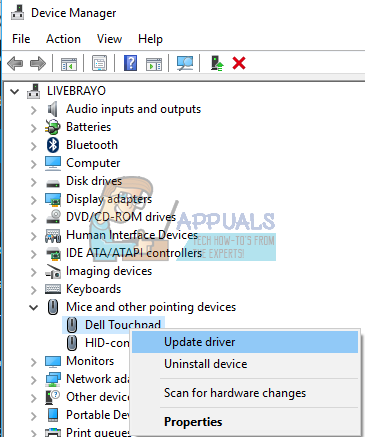
- On the next window click “Search automatically for updated driver software”
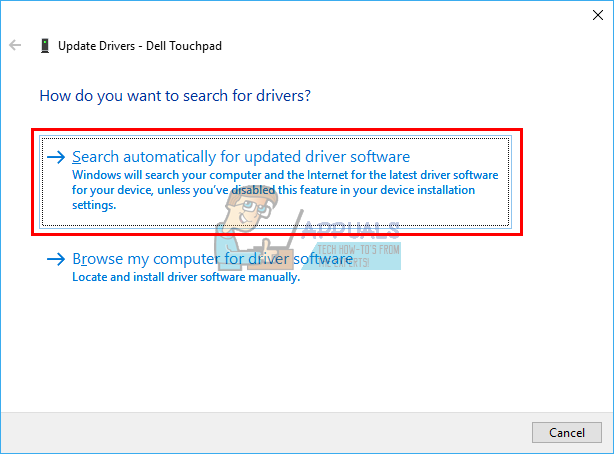
- The device manager will search for drivers online and install them.
Method 5: Disable Synaptics touchpad/mouse
If you have a secondary USB mouse and you have narrowed down the problem to the Synaptics/mouse drivers, but everything you do does not seem to resolve this problem, you can simply disable the faulty mouse/touchpad.
- Press Windows Key + R to open Run
- Type devmgmt.msc and hit enter to open device manager

- Expand the ‘Mice and other pointing devices’ section
- Right-click on your mouse or touchpad drivers and select ‘Properties’
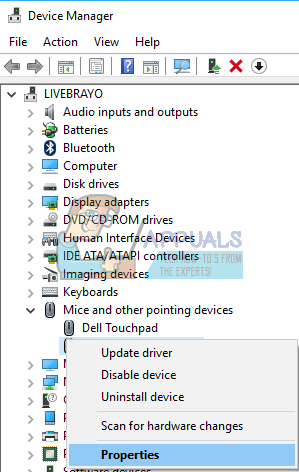
- Go to the ‘Driver’ tab and click on ‘Disable device’
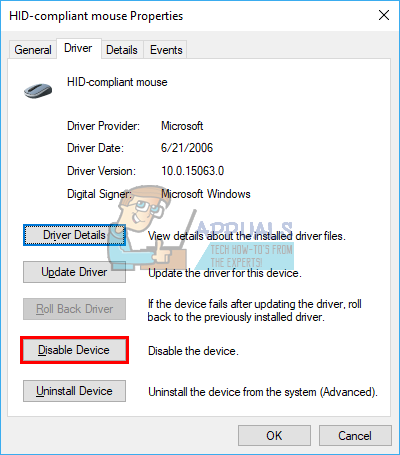
- In the Window that asks for confirmation, click on Yes to disable the device.
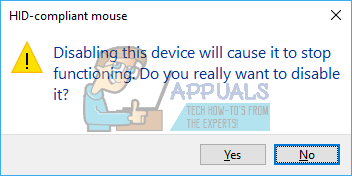
Method 6: Uninstall Synaptics Pointing Devices Driver utility
The Synaptics utility is also a major concern in this problem. Uninstalling this utility will also probably uninstall the Synaptics drivers. If your touchpad or mouse does not work after this, use method 3 to update your mouse/touchpad drivers.
- Press Windows Key + R to open Run
- Type appwiz.cpl and hit enter to open device manager
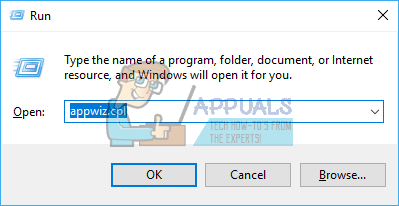
- Look for the ‘Synaptics Pointing Device Driver’ app and right click on it and then select uninstall.
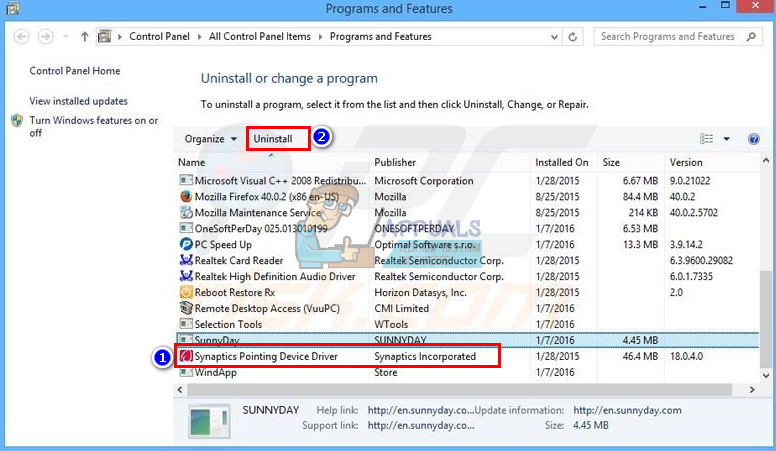
- Follow the screen prompts to remove the Synaptics tool
Method 7: Turn off Sticky Keys
Sticky keys change how your keys interact, if the drivers don’t affect these changes properly, you might get the horrible symptoms mentioned in this article. To turn off sticky keys:
- Press Windows Key + R to open Run
- Type ‘control panel’ and press Enter to open the control panel

- Choose Ease Of Access
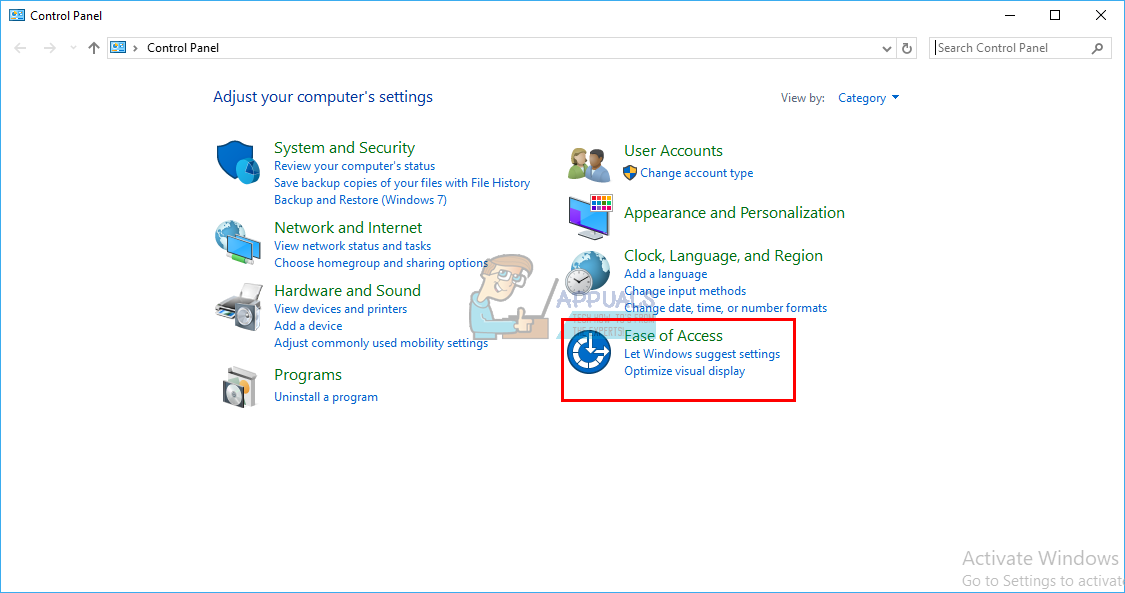
- Click ‘Choose how your keyboard works’

- Deselect Sticky Keys under Make it easier to type
- Click Apply and then OK
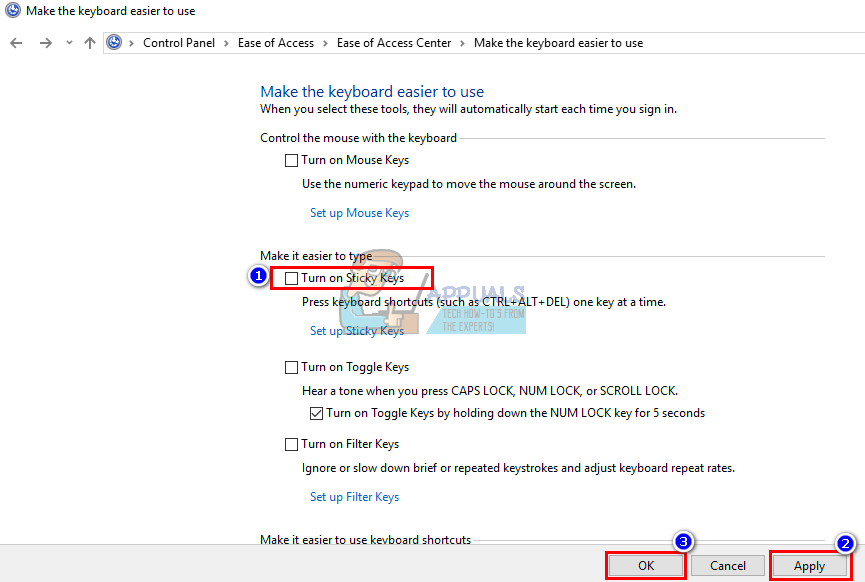
- Now test your keyboard keys
These settings are also available following an alternative procedure in Windows 10 Setting (Windows Key + I > Ease of Access > Keyboard > Sticky Keys > Off).
Method 8: Clear any debris lodged under the spacebar key
There is a possibility that something might be lodged or stuck under your spacebar key hence preventing you from effectively pressing this key. Remove the keyboard and clean it. You can use compressed air in cleaning, or if you are confident enough, you can pry off the spacebar, remove any debris and reseat the key.
NB: Do not forget that your spacebar not functioning entirely could also be a hardware/mechanical/electric problem on your keyboard that would warrant repair or replacement.